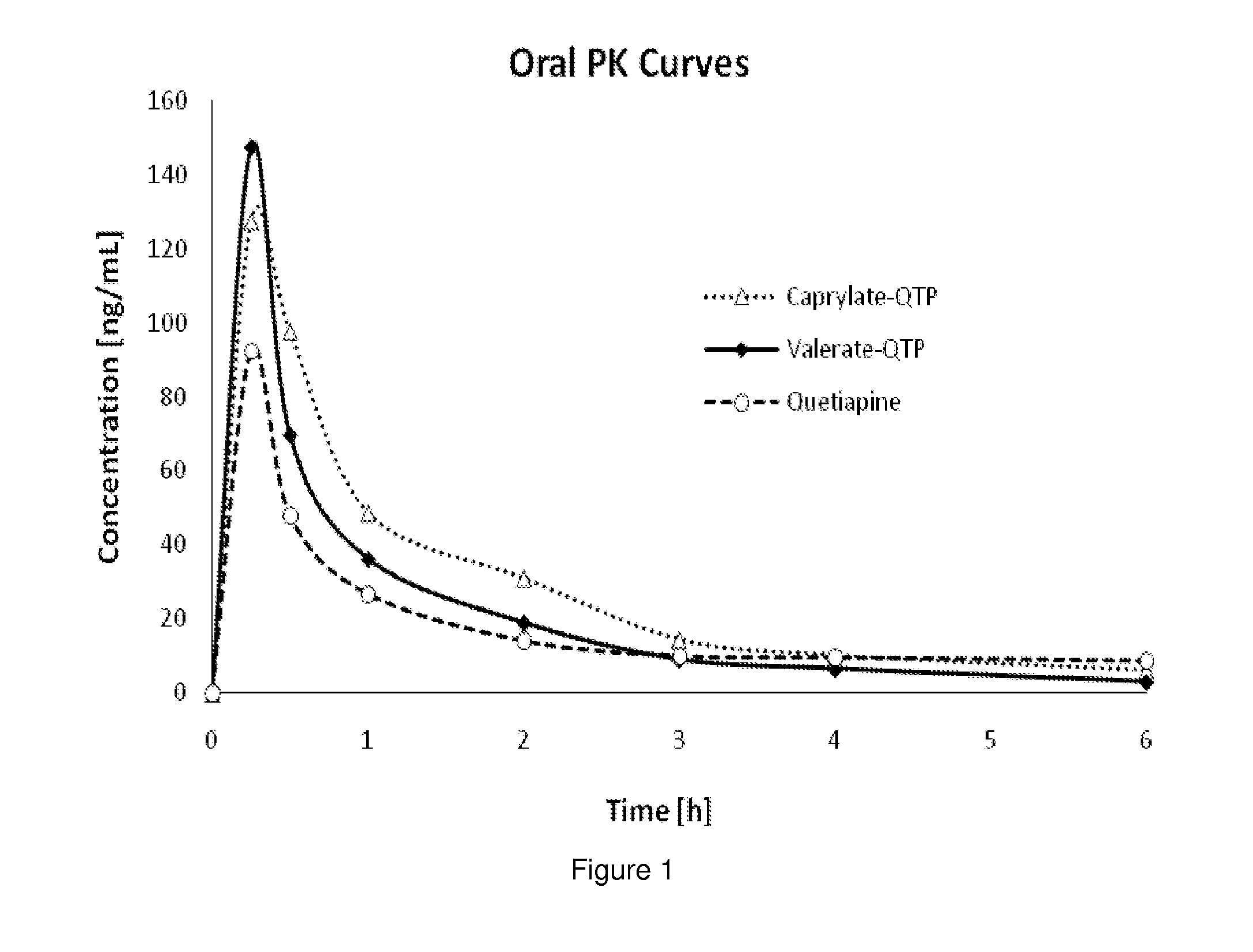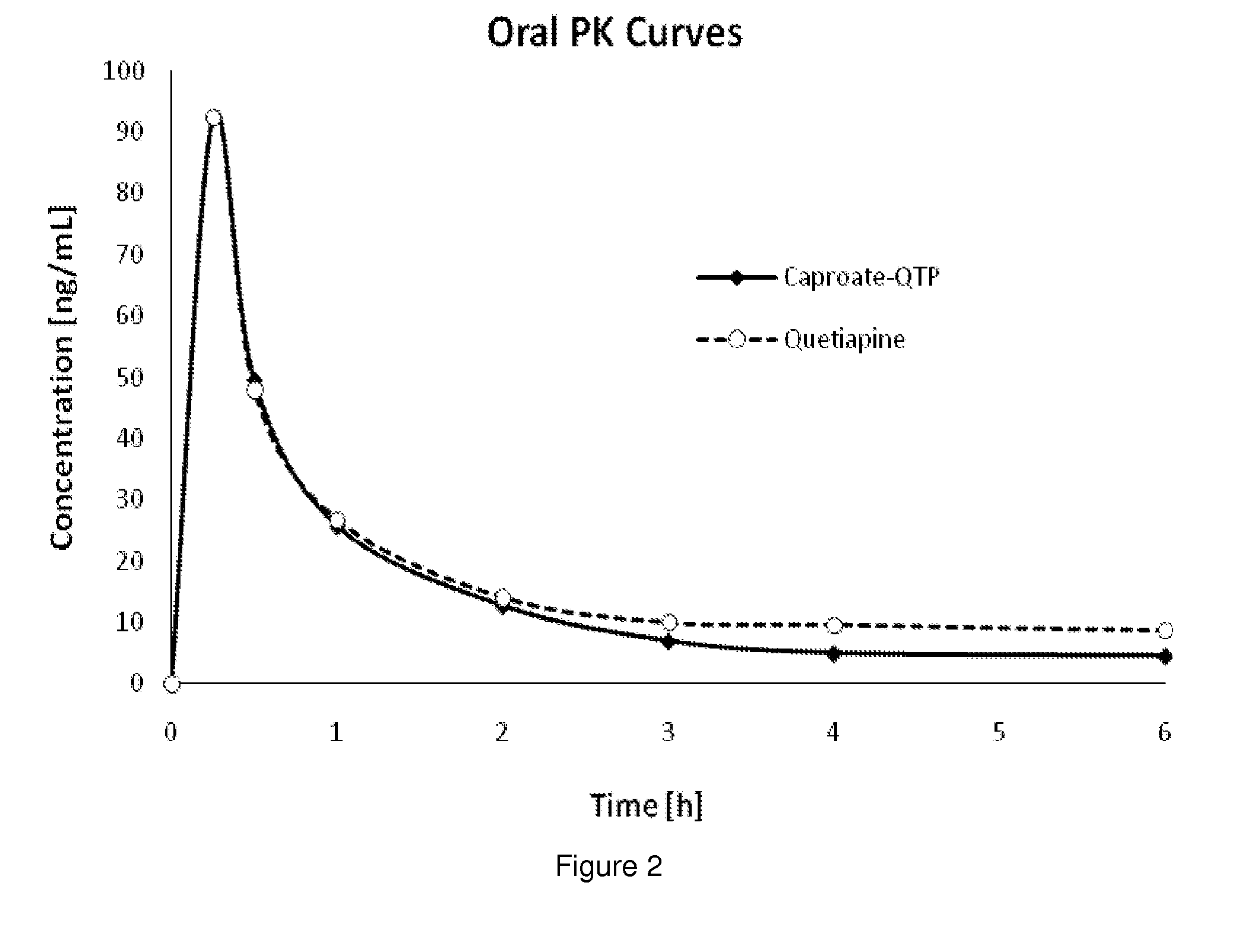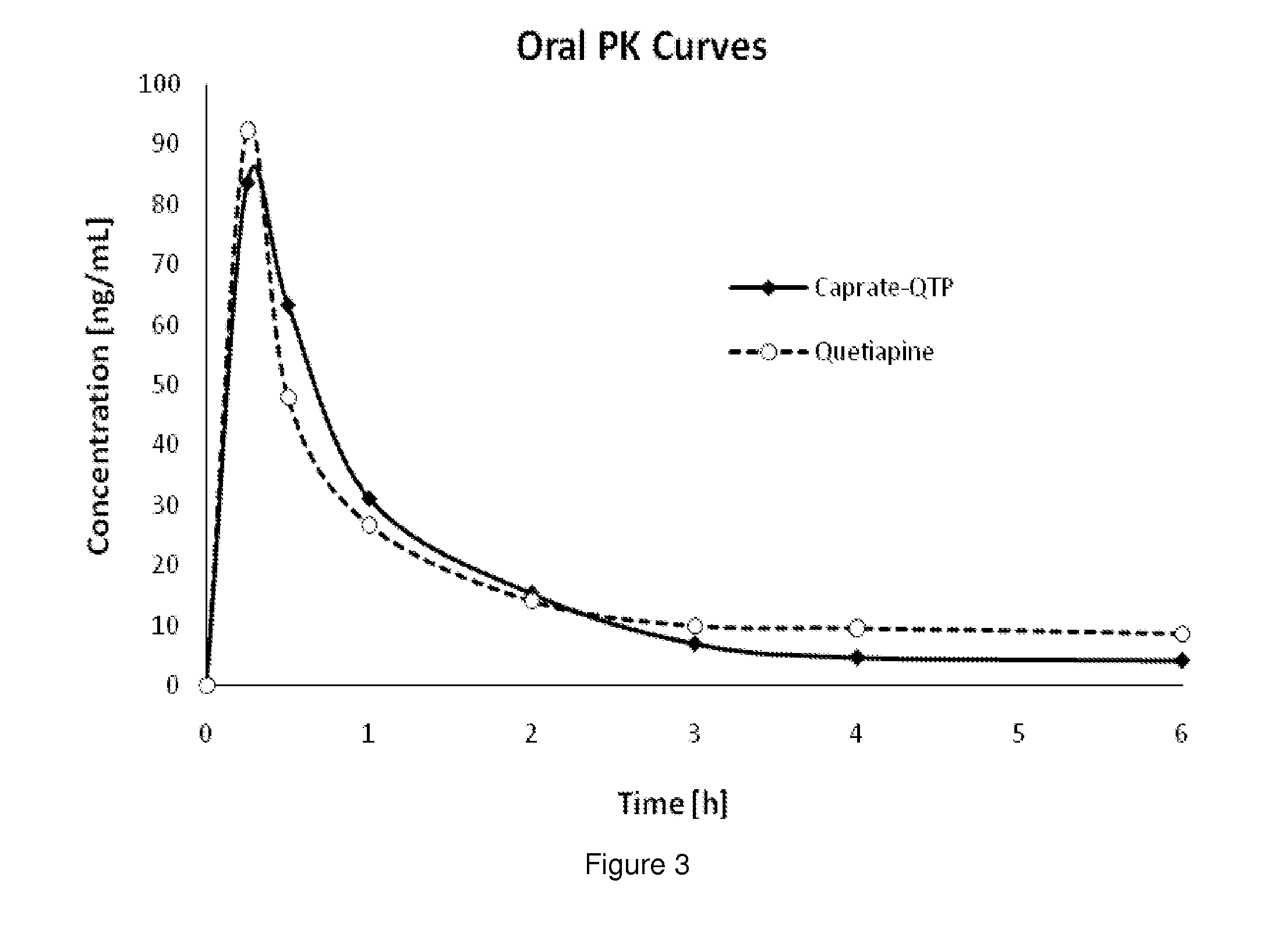Fatty Acid Conjugates of Quetiapine, Process for Making and Using the Same
a technology of quetiapine and fatty acid conjugates, which is applied in the field of fatty acid conjugates of quetiapine, process for making and using the same, can solve the problems of difficult tablets of such a high concentration of active pharmaceutical ingredients (api), and achieve the effects of increasing the relative bioavailability of quetiapine, reducing interindividual variability, and increasing bioavailability
- Summary
- Abstract
- Description
- Claims
- Application Information
AI Technical Summary
Benefits of technology
Problems solved by technology
Method used
Image
Examples
formulation examples
[0125]In one embodiment, the composition comprising the conjugate of quetiapine or an active metabolite and / or derivative thereof and a saturated fatty acid, a monounsaturated fatty acid, a polyunsaturated fatty acid, an acetylenic fatty acid, a substituted fatty acid, a heteroatom containing fatty acid, a ring containing fatty acid or a combination thereof is formulated for oral administration. In another aspect, the composition comprising the conjugate of quetiapine or an active metabolite and / or derivative thereof and a saturated fatty acid, a monounsaturated fatty acid, a polyunsaturated fatty acid, an acetylenic fatty acid, a substituted fatty acid, a heteroatom containing fatty acid, a ring containing fatty acid or a combination thereof is formulated for sublingual, or transdermal, intrathecal or a suppository administration in other discrete formulation embodiments of the compositions provided herein and are used in the systems and methods described herein.
[0126]In one embodi...
example 1
Oral Pharmacokinetic Data
[0216]Prodrug conjugates described herein were dosed as oral solutions in rats and compared to an equimolar solution of quetiapine dihydrochloride. Although the commercial form of quetiapine (Seroquel®) is a fumarate salt, the dihydrochloride salt was used as comparator because the fumarate is not soluble enough to be dosed efficiently via oral gavage in rats.
[0217]Generally and as shown in FIGS. 1-4, plasma concentrations of quetiapine released from the prodrugs described herein were compared to plasma concentrations generated by an equimolar amount of quetiapine hydrochloride salt. Overall, plasma concentrations of released quetiapine varied depending on the attached fatty acid. Exposure ranged from 34-121%-AUC compared to quetiapine hydrochloride salt.
example 2
General Synthesis of Fatty Acid-Quetiapine Conjugates
[0218]A general synthetic scheme for the synthesis of a prodrug of this invention typically consists of the following steps (See FIG. 5):[0219]1. Protection of a functional moiety on the fatty acid, if applicable.[0220]2. Activation of the carboxylic group, if not already in activated form.[0221]3. Addition of activated fatty acid to quetiapine or vice versa in the presence of base[0222]4. Removal of protecting groups on functional moieties of the fatty acid, if applicable.
[0223]To a solution of quetiapine freebase (1 mmol) in anhydrous THF (20 mL) was added TEA (3 mmol) and DMAP (0.1 mmol). The solution was stirred and the fatty acid chloride (1.5 mmol) was added drop wise at room temperature. After 2-6 hours, depending on the fatty acid derivative, solvents were evaporated to dryness and the residue was dissolved in ethyl acetate (400 mL). The organic phase was washed with aqueous NH4Cl (2×250 mL) and aqueous NaHCO3 (2×250 mL), ...
PUM
 Login to View More
Login to View More Abstract
Description
Claims
Application Information
 Login to View More
Login to View More - R&D
- Intellectual Property
- Life Sciences
- Materials
- Tech Scout
- Unparalleled Data Quality
- Higher Quality Content
- 60% Fewer Hallucinations
Browse by: Latest US Patents, China's latest patents, Technical Efficacy Thesaurus, Application Domain, Technology Topic, Popular Technical Reports.
© 2025 PatSnap. All rights reserved.Legal|Privacy policy|Modern Slavery Act Transparency Statement|Sitemap|About US| Contact US: help@patsnap.com



